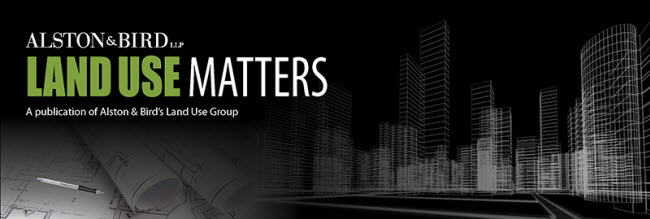
City of Los Angeles
Department of City Planning
Master Planned Development Zone Ordinance
On May 2, 2014, the Department of City Planning (DCP) will hold a public hearing on a proposed ordinance to establish a Master Planned Development (MPD) Zone that will facilitate the development of campus-like unified and integrated development projects. The MPD Zone will be adopted with a development plan and standards that will regulate all projects within a development site, eliminating the need for separate costly and time-consuming conditional use permit, variance and site plan review applications. Unlike specific plans which typically regulate multiple properties with multiple owners, MPD Zone developments must be owned and planned by a single owner or entity. After the MPD ordinance takes effect, individual parcels can be sold or transferred. A minimum three acres of lot area located within continuous parcels of land is required for each proposed MDP Zone and the proposed development plan must include: (a) 500,000 square feet or more of non-residential floor area; or (b) 500 or more dwelling units or guest rooms; or (c) any combination of dwelling units and guest rooms that equals 500 or more; or (d) 250,000 or more of non-residential floor area and 250 or more of dwelling units, guest rooms or a combination of dwelling units and guest rooms.
Click here to review the proposed ordinance, application requirements and development standards. June 6, 2014 is the last day to submit comments to DCP.
City Council
Hollywood Community Plan Update Rescinded
On April 2, 2014, the City Council adopted a resolution rescinding, vacating and setting aside all actions approving the Hollywood Community Plan Update (HCPU) including amendments to the Hollywood Community Plan and all related amendments to the General Plan Framework and Transportation Elements. The Hollywood Community Plan and other related General Plan Elements will revert back to the plans and maps that were in place prior to the City’s adoption of the HCPU on June 19, 2012. The Council also adopted an ordinance repealing Ordinance 182,173 for zone and height district designations for the HCPU area and staff was directed update the appropriate zoning maps. These actions were done in response to the February 11, 2014 judgment issued by the Los Angeles Superior Court.
Click here to review the entire Council File.
California Environmental Quality Act
Citizens for Environmental Responsibility vs. State of California, 14th District Agricultural Association (3rd App. Dist.; Sacramento; March 26, 2014)
The Court rejected a CEQA challenge to the staging of a rodeo show at the local fairgrounds. With its approval of the rodeo, the lead agency adopted the categorical exemption for “normal operations of existing facilities for public gatherings.” The case is notable on two fronts. First, while confirming the general rule that CEQA mitigation measures cannot be used to support the use of categorical exemption, the Court explained that certain actions taken before a project is proposed may not violate that rule even though the effect of the action is to mitigate potential impacts. In this case, the operator of the fairgrounds adopted a written program memorializing its practices aimed at reducing runoff of animal waste into the nearby stream. (The Court also pointed to, with approval, an earlier case where a developer dedicated right-of-way prior to applying for its project, which alleviated traffic in the vicinity of the project site.) The second important holding in the case is the reaffirmation of the two-part test for determining the applicability of the exception to categorical exemptions, namely whether the project would a cause a significant environmental impact “due to unusual circumstances.” In an exhaustive review of the case law concerning this exception, the Court confirmed that the “unusual circumstance” has to be separate and distinct from the potential significant impact. The Court also held that the following factors are relevant to this question: (1) whether the project would cause impacts different in kind than those associated with the type of project covered by the categorical exemption at issue, (2) the project’s consistency with surrounding zoning and land use, and (3) the scope and size of the project. Download Opinion.
California Clean Energy Committee vs. City of Woodland (3rd App. Dist.; Yolo County; April 1, 2014)
The Court upheld a CEQA challenge to the development of a regional commercial center. The project would have consisted of a retail center of 800,000 square feet, three hotels, restaurants, an auto mall and office space totaling 100,000 square feet. The Court invalidated the project’s EIR on three grounds: urban decay analysis, energy impact analysis and alternatives. First, the City had found that the project would cause significant urban decay impacts, but imposed a variety of mitigation measures to reduce the impact to a less than significant level. However, the Court found that the mitigation measures did not meet CEQA standards for a variety of reasons. Most notably, the measures required the developer to pay various fees and participate in different studies aimed at reducing urban decay impacts, but the measures did not set any performance criteria or identify any concrete actions to be taken after the studies are completed. (Note that the Court did not address the question of whether the City could have adopted these mitigation measures, but then adopt a Statement of Overriding Considerations on the ground that the urban decay impact was still significant after mitigation.) Next, in an often forgotten part of the CEQA Guidelines, the Court found that Appendix F still requires an analysis of whether the project includes “measures proposed to reduce wasteful, inefficient and unnecessary consumption of energy during construction, operation and maintenance….” The Court found that this requirement extended to an examination of transportation energy impacts and renewable energy impacts, which the EIR failed to address. Finally, the Court found error in the lead agency’s rejection of a mixed-use alternative, which was scaled to be the approximate size of the proposed project. The City rejected the alternative on the ground that it would cause greater impacts than the proposed project. However, while the proposed project was substantially reduced in size at the final approval stage, the Court found no analysis in the EIR of the feasibility of reducing the mixed-use alternative in a similar fashion to reduce its impacts. Download Opinion.
SUBSCRIBE TO LAND USE MATTERS
This publication by Alston & Bird LLP provides a summary of significant developments to our clients and friends. It is intended to be informational and does not constitute legal advice regarding any specific situation. This material may also be considered attorney advertising under court rules of certain jurisdictions.

